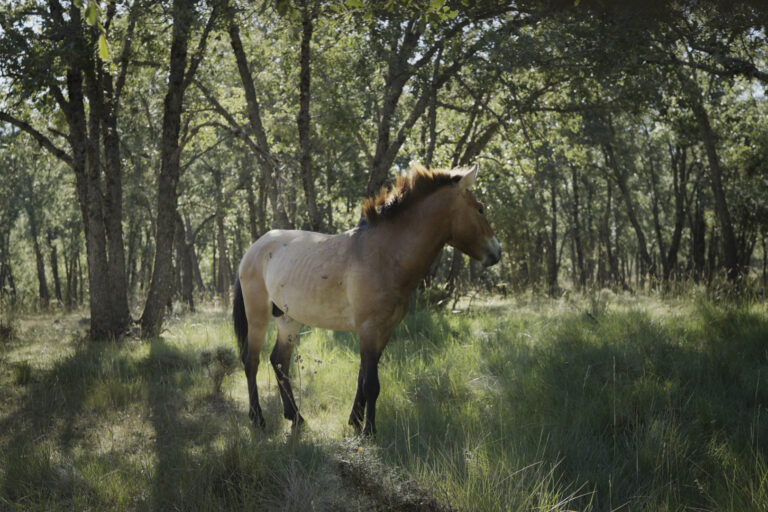
Humans and tigers can coexist in the same area with minimal conflict, finds a new study that raises hopes for big cat conservation.
The research, published in the journal Proceedings of the National Academy of Sciences (PNAS) by an international team of scientists, used camera traps to examine tiger density in and around Chitwan National Park in Nepal during 2010 and 2011. It found that tiger density “remained high despite the ubiquitous presence of people on foot or in vehicles”, indicating that tigers and humans overlapped spatially.
“Tigers have adapted to human presence by becoming more active at night and less active during the day, when human activities peak,” explained a statement released by PNAS.
The authors, led by Neil Carter of Michigan State University, say the findings could inform efforts to conserve tigers. For example, villagers could be encouraged to pen their livestock at night to reduce losses to tigers, while authorities could place restrictions on car traffic in sensitive areas at night to reduce disturbance.
“Conservation plans informed by fine-scale spatial and temporal insights can help address a major global challenge—meeting human needs while sustaining wildlife in an increasingly crowded world,” the authors conclude.
Scientists estimate there are less than 4,000 tigers left in the wild, down from roughly 100,000 at the beginning of the 20th century. Habitat destruction, loss of prey, and poaching are the biggest threats to tigers.
CITATION: Neil Carter, Binoj Shrestha, Jhamak Karki, Narendra Man Babu Pradhan, and Jianguo Liu. Coexistence between wildlife and humans at fine spatial scales. PNAS Early Edition for the week of September 3, 2012 www.pnas.org/cgi/doi/10.1073/pnas.1210490109
Related articles
Tigers vs. coal in India: when big energy meets vanishing cats

(08/01/2012) Burning coal fuels climate change, causes acid rain, and spreads toxic pollutants into the environment, but now a new Greenpeace report warns that coal may also imperil the world’s biggest feline: the tiger. Home to world’s largest population of tigers—in this case the Bengal subspecies (Panthera tigris tigris)—India is also the world’s third largest coal producer. The country’s rapacious pursuit of coal—it has nearly doubled production since 2007—has pushed the industry into tiger territory, threatening to destroy forests and fragment the tiger’s already threatened population.
APP’s new ‘sustainability roadmap’ won’t spare unprotected tiger habitat in Sumatra
(07/27/2012) Asia Pulp & Paper’s new sustainability commitment represents a scaling back of earlier environmental pledges and does not offer new protection for natural forests in Sumatra, alleges a new report from Eyes on the Forest, a coalition of green groups based in Riau, Sumatra.
Rangers now allowed to shoot tiger poachers on sight in Indian state
(05/25/2012) In the wake of a surge in tiger poaching, the state government of Maharashtra, India will no longer consider the shooting of wildlife poachers by forest rangers a crime, reports the Associated Press.
Parks key to saving India’s great mammals from extinction

(02/24/2011) Krithi Karanth grew up amid India’s great mammals—literally. Daughter of conservationist and scientist Dr. Ullas Karanth, she tells mongabay.com that she saw her first wild tigers and leopard at the age of two. Yet, the India Krithi Karanth grew up in may be gone in a century, according to a massive new study by Karanth which looked at the likelihood of extinction for 25 of India’s mammals, including well-known favorites like Bengal tigers and Asian elephants, along with lesser known mammals (at least outside of India) such as the nilgai and the gaur. The study found that given habitat loss over the past century, extinction stalked seven of India’s mammals especially: Asiatic lions, Bengal tigers, wild dogs (also known as dholes), swamp deer, wild buffalo, Nilgiri Tahr, and the gaur. However, increasing support of protected areas and innovative conservation programs outside of parks would be key to saving India’s wildlife in the 21st Century.
Fearful Symmetry—Man Made, an interview with John Vaillant, author of The Tiger

(03/14/2011) In The Tiger, John Vailliant weaves a haunting and compelling true narrative of men who live—or die—with tigers. No doubt the story itself is on-the-edge of your seat reading. As well, the book provides factual information on the 400 or so Amur Tigers remaining, and the raw milieu that is Primorye, Far East Russia—a wilderness and people unto their own. What is special, transcendent even in this story, however, murmurs uncomfortably in the background. Questions emerge from deep taiga snow, not unlike the unseen Panchelaza Tiger. What exactly is our relationship with apex predators? How do people live with them? How would you live with them in your backyard? What if your pet dog disappeared? As we ourselves are apex predators, are we wise enough, tolerant enough, compassionate enough to share this planet with them? Evidence today points to the contrary, but this can change.
Tiger farming and traditional Chinese medicine

(06/27/2010) The number of wild tigers has plummeted from 25,000-30,000 animals 50 years ago to around 3,200 today. A large part of the drop is from habitat loss and fragmentation. Tiger habitat has been reduced by 40 percent over the last decade, and tigers now occupy less than 7 percent of their historical range. Poaching has also contributed significantly to these dramatic population declines, particularly to supply parts for use in traditional medicine. In an interview with Laurel Neme, Grace Ge Gabriel, Asia Regional Director for the International Fund for Animal Welfare (IFAW), notes that, although the Chinese government has made significant efforts to reduce demand for tiger products by eliminating tiger bone from the official pharmacopeias, raising consumer awareness and identifying cheaper and more effective herbal alternatives to tiger bone for use in TCM, tiger farms threaten to reopen demand for tiger products by breeding tigers excessively, stockpiling tiger carcasses, and stoking demand by making and selling wine made from tiger bone.














